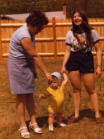Here is a great dementia resource for caregivers and healthcare professinals,
Your residents will love the Amazon Kindle Fire
Here is information on being the best caregiver you can be
Here is a way for nurses administrators, social workers and other health care professionals to get an easyceu or two
Follow alzheimersideas on twitter
The Dementia Caregiver's Little Book of Hope [Kindle Edition]
I thought you might be interested in this
There is now a monthly newsletter (on the mlhealth.org website) with a calendar that shows just how many activities there are to participate in at this nursing home. Among the events during the year: an antique car show, a Christmas mini-mall, regular baking, visits from local schoolchildren, a farm ...
There is much talk in the news lately about residential nursing facilities (nursing homes) for seniors, much of it not good. With nearly 20,000 nursing homes in the United States caring for approximately 1.6 million residents – a number that is predicted to quadruple to 6.6 million by 2050 – reports of abuse and neglect are on the rise. It’s no wonder families struggle with eldercare choices.
But if you visit Mille Lacs Health System Long Term Care, you will see signs in the hallways that remind employees:
That idea is the foundation for how people are cared for here.
On a late winter day, MLHS Activities Aide Bernie Woitalla is leading a spirited morning word-find game with a large circle of residents. Brad Opager, also from the Activities Department, later reads the paper to a group which is discussing current affairs. Nursing assistant Maranda Boser, helping to wheel a resident down to the communal dining room, stops to enjoy a colorful finch in the large bird aviary with her. The respect and caring for the residents at MLHS Long Term Care is something you can feel, just walking down the halls or peeking into the dining commons area where floor-to-vaulted-ceiling windows let in plenty of sunshine.
When MLHS Activities Director Amber Sjodin joined the team, the already energetic Activities Department became buoyant with even more ways to help the residents engage with others and keep stimulated. There is now a monthly newsletter (on the mlhealth.orgwebsite) with a calendar that shows just how many activities there are to participate in at this nursing home.
Among the events during the year: an antique car show, a Christmas mini-mall, regular baking, visits from local schoolchildren, a farm animals day, State Fair day, a spelling bee, a Father’s Day BBQ, fundraising activities for the Family Council and art projects. The residents are also treated to regular visits by local musicians and music/dancing groups from the schools and community.
The local community’s contributions to the facility are much appreciated. The Onamia Lions and the local quilters club donate gifts, and an anonymous donor gave $2,000 to develop a state-of-the-art music program for the MLHS Memory Care Unit, which will lessen the anxiety that accompanies Alzheimer’s disease and dementia.
Staff at MLHS also get involved, donating Christmas gifts to the residents at the holidays, as well as participating in the Silly Fashion Show, a festive sweater contest and the annual Halloween costume contest.
The 15-member family council brought the idea of a family room to reality, which was created as a cozy place for families to congregate for birthdays, reunions or other kinds of get-togethers. It has even been utilized for end-of-life gatherings.
The IN2L (It’s Never Too Late) computer and wall monitor get lots of use in the facility’s communal space. IN2L is a picture-based touch-screen that features education, games, spiritual content, virtual travel, e-mail, web cams, era-specific music and movies.
A new Long Term Care Rest and Relax program is being developed in the MLHS Memory Care Unit to help decrease “sundowning” (where confusion and agitation seem to get worse in the late afternoon and evening).
Kathy Kleen, R.N. and LTC Director of Nursing, says, “We realize not everybody is a joiner, and that’s okay. So we do a lot of one-to-one programming, too. Caring for body, mind and spirit using an individualized approach is our goal.”
“I supervise Minneapolis HCMC Family Medicine residents in who spend a few weeks with me here at MLHS,” says MLHS staff physician Tom Bracken. “They have an opportunity to visit MLHS Long Term Care, and invariably they are very surprised at the warm and caring atmosphere of our facility compared to those they visit in the metro area. The last resident said to me, ‘This seems like a home, not a nursing home.’”
“We really are a community within a community here,” says Kathy Kleen, who believes in strong leadership and ongoing education for staff members. “And I’m proud of the longevity of some of our staff. It helps with stability and continuity.”
In the MLHS Memeory Care Unit, employees talking gently with residents who are staring out the windows at the beauty of Lake Onamia demonstrate the commitment to the idea that the people who reside here should be respected and cared for as if they were “your own.”
It adds up to a place that really is dedicated to making sure the residents feel it is their home. And if home is where the heart is, there is a whole lot of heart here.
















